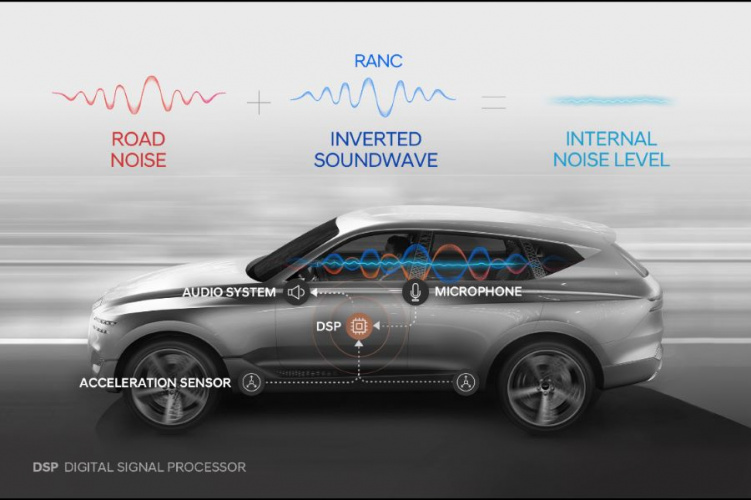Known as RANC (Road-noise Active Noise Control), it uses velocity sensors, amplifiers and microphones to calculate vibration and noise from the road, then uses a digital signal processor (DSP) to produce an inverted soundwave to mitigate that noise. According to the Korean car giant this process takes just 0.002 seconds. By contrast, it takes around 0.009 seconds for road or engine noise to reach the passenger.

The system delivers tailored noise cancellation for the driver, front passenger and rear seats. Based on tests evaluating road surface, vehicle speed, and different seating positions, RANC was able to reduce in-cabin noise by 3dB - roughly half the noise level compared to vehicles where the technology was not activated.
_____________________________________________________________________
Further reading
- The Engineer drives: Hyundai Nexo – a glimpse into the hydrogen future?
- Hyundai unveils walking concept car
- It’s (not) a beautiful noise
_____________________________________________________________________
Though active noise cancellation is commonly used by headphone manufacturers, the proximity of the speaker to the eardrum makes this a relatively straightforward task. Applying the same technology in the more dynamic and complex environment of a moving vehicle is considerably more difficult.
Existing in-cabin noise cancellation has been confined to persistent noise, generally from the engine, with no ability to adapt to fluctuations in the road. Using a patented deployment of sensors throughout the vehicle, RANC can respond rapidly to fluctuations in low-frequency noise. But the six-year path to production-readiness has not been easy, according to the team behind the technology.
"At the beginning of the development, the analogue sensors we used cost over 20,000 USD each, so we had to switch to digital sensors,” said Kang-deok Lee, Research Fellow at Hyundai’s NVH Research Lab.
“That meant that two years of research had to go down the drain because we have been depending solely on the analogue sensors. We had to make everything again - the velocity sensors, microphones, the controllers and all."
As well as passenger comfort, another advantage of the technology is its potential to facilitate lightweighting. The weight of the velocity sensor, microphone, and the controller comes in at just 1kg, while the passive dampeners and mechanical fittings required to achieve the same in-cabin noise levels weigh significantly more. According to Hyundai, the team is working to improve RANC’s operating range to cover from 500 to 5,000 Hz and the first vehicle to feature the system will be the upcoming Hyundai Genesis.

Nanogenerator consumes CO2 to generate electricity
Nice to see my my views being backed up by no less a figure than Sabine Hossenfelder https://youtu.be/QoJzs4fA4fo